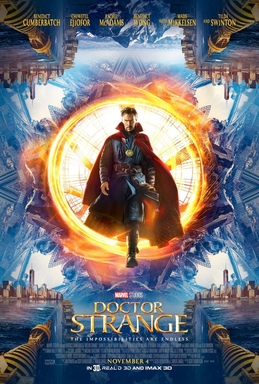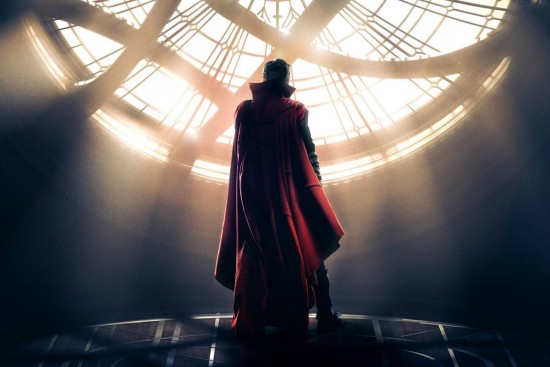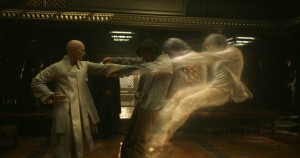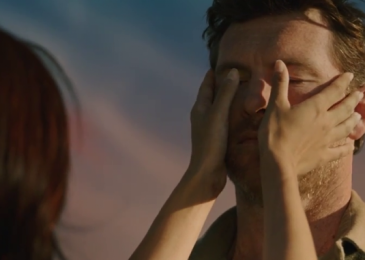When “Iron Man” debuted in 2008, some wondered just how much leeway the public would give Marvel before things got too weird. Sure, Iron Man, Hulk and Captain America weren’t that hard to see as possible hits; despite their bizarre origins, they were basically just action heroes with a comic book gloss. But at that time, audiences wanted things grounded and gritty, and the farther one delves into the Marvel universe, the deeper they go into a mythology that includes intergalactic adventures, mystical journeys, and inter-dimensional beings. How long before audiences raised an eyebrow and said, “yeah, that’s a bit much”?
We’re still waiting on an answer. Audiences have proven themselves game for some of Marvel’s more out-there elements over the last eight years. It’s not just that comic book superheroes like Iron Man, Captain America and Hulk are no longer purely the realm of nerds; it’s that the geekier things get, the more audiences love it. They’ve embraced the Norse-ish mythology of Thor, the interstellar shenanigans of “Guardians of the Galaxy” and an interconnected universe where heroes bounce from one movie to the next. And with an $85 million opening at the North American box office, it appears that the mystical “Doctor Strange” is just the latest character they’re happy to suspend disbelief for.
Of course, the dirty secret is that Marvel’s not really doing anything overly risky. Despite the geeky sheen, the movies succeed not because audiences love to take chances (there’s a box office graveyard full of indie films to disprove that), but because Marvel Studios has put together a reliable formula for entertaining fans and widening the stories’ scope. Find a charismatic actor to play a humbled character who learns to care for others (the exception is Captain America), throw in a glowing thingy that the villain wants, add some fun action sequences and a liberal dose of humor, and you have the type of lightweight, fun adventure that ropes in all audiences. You can gussy it up with sci-fi quirks or metaphysical mumbo-jumbo, but in the end Marvel’s simply hit on something that works and can be replicated. I’m not sure that’s really a criticism. While I wouldn’t call any of the Marvel movies high art (although “Guardians of the Galaxy” made my 2014 top 10 list), I’ve enjoyed every one of the studio’s films so far.

“Doctor Strange” is no exception. Directed by Scott Derrickson and featuring highly watchable actors like Benedict Cumberbatch, Tilda Swinton, Chiwetel Ejiofor and Madds Mikkelsen, it’s a spry, fun addition to the Marvel universe that could also be this year’s most visually inventive blockbuster. You haven’t seen a Marvel story that looks like this before.
You have, however, heard one. Doctor Stephen Strange (Cumberbatch) has an origin very similar to Iron Man/Tony Stark’s. He’s the best in his field (a surgeon as opposed to a weapons builder), quick with a quip and cares about no one but himself. He’s humbled while on the road (an accident while texting instead of a military ambush), stripped of his greatest asset (his hands), and eventually learns that he has put himself in first place for so long that he’s lost sight of others. Further conforming it to the Marvel mold is a villain intent on destroying the world (Mikkelsen’s Kaecilius), side characters who make jokes about pop culture and WiFi access, and a glowing rock with magic powers that will probably come into play in future movies.
“Doctor Strange” follows many of the same beats as other Marvel movies, such as the first “Iron Man” and “Ant-Man.” But the film is still a great deal of fun, both because of Marvel’s penchant for perfecting its formula and for how it uses that formula as a way to expand its world.
Strange is similar to Tony Stark, but Cumberbatch plays different notes than Robert Downey Jr. did. He’s unafraid to be a bit of an ass, more cold-hearted and cynical than the garrulous Stark. And after his accident, he doesn’t have the quick change of heart that caused Tony to be Iron Man. Cumberbatch plays the role as more of a humbling process, breaking Strange and leading him to a place where every natural, scientific and technological solution fails him.
It’s here that the film shifts into a higher gear, introducing mysticism and magic to the Marvel world. Strange travels to Nepal to find answers and meets The Ancient One (Tilda Swinton), a bald, ageless Celtic mystic who clues Strange in to the the mysterious realm of the multiverse, an inter-dimensional world outside of our own, where spirits and souls do battle and master magical forces to keep darkness at bay. Up until this point, the Marvel movies have explained away their headiest concepts by linking them to pseudo-scientific explanations. Although the Ancient One tells Strange he can think of spells in more earthbound terms, the development brings an intriguing and invigorating spiritual dimension to the Marvel world.
Derrickson initially seemed to be an odd addition the the Marvel universe. The director is best known for horror films like “Sinister” and “The Exorcism of Emily Rose,” not big-budget action spectaculars. But Derrickson, who’s very open about his Christian faith, has always had an interest in protagonists who learn the world is bigger than they assumed and who have to fight entities from realms their eyes cannot see. I imagine some more conservative Christian viewers might take issue with the way the film borrows from Eastern religions and mystical philosophies. But they’re likely going to overlook that “Doctor Strange” is a surprisingly soulful action-adventure, with a protagonist who has to overcome his skepticism in a world that’s bigger and stranger (sorry) than he could ever understand, a struggle I can relate to. It’s not a “Christian” story, but it is a stoy of faith and spirituality.
It’s also a heck of a trip. While I’ve been a fan of the Marvel movies from the start, I can’t really argue with critics who take issue with the films’ visual flatness. Aside with the colorful and quirky “Guardians,” the movies stick to a familiar and somewhat bland palate, probably to more easily integrate various characters into different movies. But “Strange” is the first non-“Guardians” Marvel movie to thrill with its visual imagination, particularly during an early trip Strange takes through the multiverse. It’s a wonderfully bizarre, psychedelic moment, filled with inexplicable images, bright colors, and images of reality folding into and out of itself. As Strange, his friends and his villains learn how to manipulate matter and play with time, cities twist, turn and expand; time runs backwards and forwards at once; and giant, galaxy-size demons threaten our world. Sure, there are elements to this story you’ve seen before (it’s not unfair to describe it as “Iron Man” meets “Harry Potter” by way of “The Matrix”), but you’ve probably never seen it looking like this.
Derrickson acclimates to big-budget film-making well, turning in an energetic, imaginative and fun movie. The action sequences are some of the most inventive and thrilling in the Marvel canon, thanks to the way Strange and his adversaries can zip up and down walls and streets as reality twists around them. The mysticism doesn’t dull the Marvel sense of humor, which is just the right amount of funny and cheesy, most notably in the addition of a sentient cloak that aids Strange, whipping him around and walloping bad buys as if Aladdin’s magic carpet had learned kung fu. And you really can’t go wrong with this cast. Cumberbatch plays arrogance and brokenness very well, and is a charismatic addition to the MCU, even if it took me a few minutes to accept an American accent coming from his famous face. I’m interested to see him trading barbs with Tony Stark and matching wits with Loki. Swinton, as always, is great in her role as the mentor, able to convey ageless wisdom and spirit. Ejiofor and Mikkelsen are reliably good in their minor roles as well. Only Rachel McAdams, as Stranger’s friend and former love interested, is wasted, relegated to the side in a way I thought the Marvel universe had moved past after Natalie Portman’s treatment in the Thor films.
It was a tricky proposition to bring the mystical side of Marvel to the big screen, given that audiences aren’t usually predisposed to spirituality and magic in their adventures. Screenwriter C. Robert Cargill ably introduces this new aspect into the MCU, using the aforementioned Marvel formula to keep things just familiar enough while also expanding the reality of the world. It’s both a blessing and a curse. The structure keeps things from ever becoming incomprehensible, with one foot in a recognizable and beloved world at all times. But it also leaves the story, at times, feeling too earthbound. After the initial trip through the multiverse, I was a bit disappointed to see the film remain largely fixed in our world, even if the characters were instantly teleporting from Nepal to New York, London and Hong Kong. I kept wanting the movie to push further and play with its concepts a little. Alas, this is an origin story, and these movies usually don’t have the confidence to untether themselves until a sequel or the next big team-up (don’t worry; two post-credit scenes hint at both).
But I suppose that it’s not really much of a criticism to say that the worst thing about a film is that I wanted more of it. “Doctor Strange” is a fun expansion of the Marvel world and I’m sure there are years of adventures to come. Maybe with the next one, he can find the spell that breaks him free from the formula.






